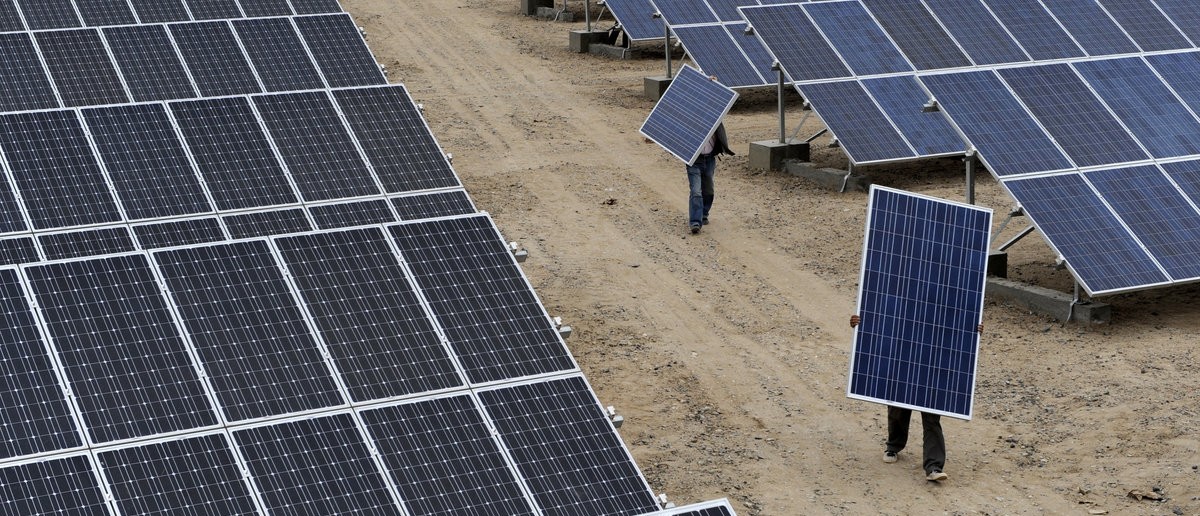Meet the new federal Western Solar Plan. Much of the land in the Western US is federal and managed by the appropriately named Bureau of Land Management or BLM. In some Western States, over 50% of the land is federal.
Using that land control, BLM has just proposed a monstrous (in size and scope) plan for solar power development called the Western Solar Plan. The Plan covers the eleven westernmost states, from border to border. From Arizona, California, Colorado, Nevada, and New Mexico to Utah, Idaho, Montana, Oregon, Washington state, and Wyoming.
They also have a draft Programmatic Environmental Impact Statement (PEIS) for the Plan, which they are taking comments on through April 28, 2024.
The PEIS and other Plan information is available here: https://blmsolar.anl.gov/
Comments should be sent to [email protected]
The really important number is simple and round. It is also breathtaking. They want 100,000 MW of solar capacity developed, more than doubling US capacity. A better choice would be zero, which is also round, but I digress. This incredible number is not based on a needs analysis, as there is no need. It is just a number somebody pulled out of somewhere.
There are lots of environmental concerns with this huge number. Given that a solar facility can take 15 acres per MW, we are talking about something like 1.5 million acres of industrial plant. Plus thousands of miles of access roads, no doubt. These are mostly remote areas, and you do not deliver a thousand acres of solar panels on pickup trucks, so a lot of heavy-duty roads will be built.
These concerns are, of course, shrugged off by the PEIS in the usual industrial green way. There are lots of vague promises that care will be taken when the actual facilities come to be planned, approved, and built, which they will be no matter the environmental destruction.
But the biggest concern by far is not addressed, namely, what this monstrosity is going to cost the poor people who have to pay for it. These are the people and outfits that use electricity, many of which are already struggling to pay ever-increasing prices. What will the bill be?
One might think that perhaps cost is just not part of environmental impact assessment. Not at all, as there is an entire section of the PEIS titled “Socioeconomics”. It includes a lot of money, stuff like tax revenue, local construction revenue, jobs, etc. There are even dollar estimates for some revenue items. So, people paying for all this stuff is certainly a central socioeconomic consideration.
By coincidence, the standard estimate for conventional utility-scale solar is also nice and round at $1,000,000 a MW. So the Plan costs one hundred billion dollars ($100,000,000,00) to build, plus all those access roads.
But that is just the construction cost. Projects like utility-solar are financed over the long term, so there are big interest charges. These, plus the profits for the facility owners often can double the cost. This two hundred billion dollars is what is called the revenue requirement for the Plan, which is what the poor electricity users must ultimately pay.
Two hundred billion dollars for something they do not need. Pure Bidenomics!
In reality, the cost is higher, maybe much higher. This is because the intermittency of solar greatly reduces the efficiency of the reliable generators in the system, in effect raising the cost of their output.
The reason is simple — steam. Most of our electricity comes from what are called thermal generators. These are coal and gas-fired plus nuclear. They use heat to produce steam in giant boilers, which steam then runs a turbine generator.
The problem is that this is extremely high-temperature steam, so you cannot just stop making it when the solar generation is producing energy, which is just 8 hours a day at most. You have to keep the boilers going even when solar has replaced the output.
Thus, you are consuming fuel with no output. This adds to the cost of the output the thermal plants do produce. In this way, solar and wind both increase the cost of thermal power, making wind and solar look cheaper than they really are.
Let us call this cost of keeping the thermal generator steam hot while the sun shines the backup cost of the Solar Plan. It, too, should be estimated as part of the socioeconomic impact.
In short, the PEIS is omitting a lot of socioeconomic consumer costs. Missing costs include facility and access road construction, operation, maintenance, and repair. Also, there is decommissioning and a great deal of hazardous waste disposal. Plus financing and profit. And then the backup cost. Three hundred billion might cover it, but BLM should provide the estimates.
I urge people to comment on this incredible hidden cost aspect of the Western Solar Plan PEIS. If you do comment, feel free to post that comment here as well so we can all see and learn from it.
